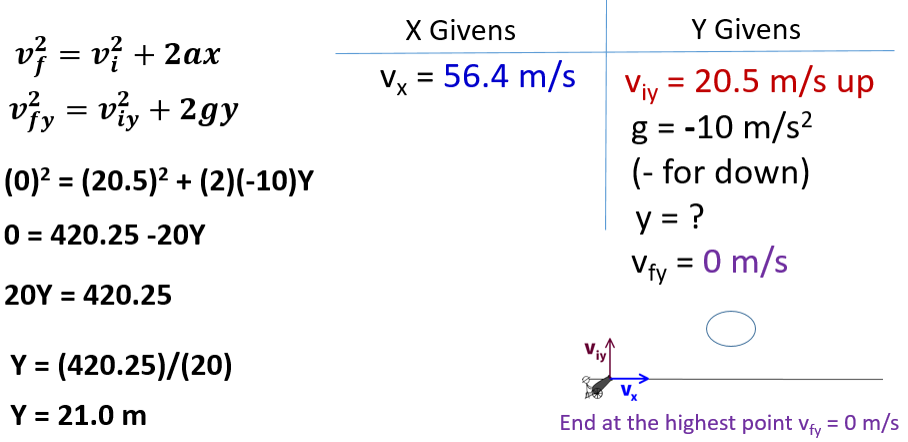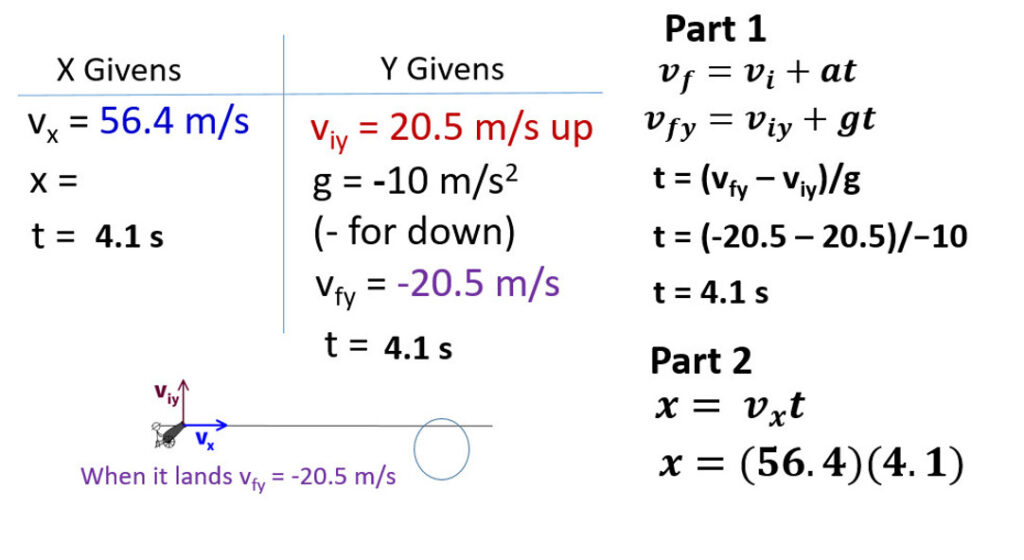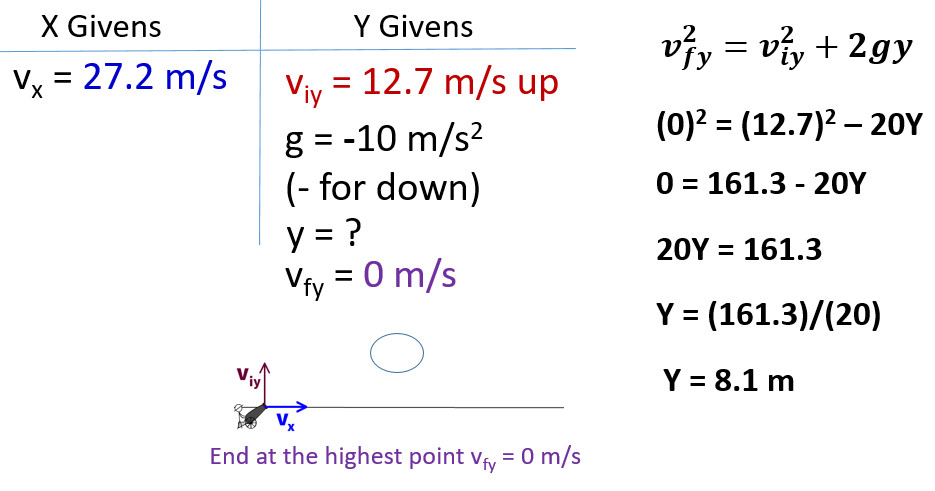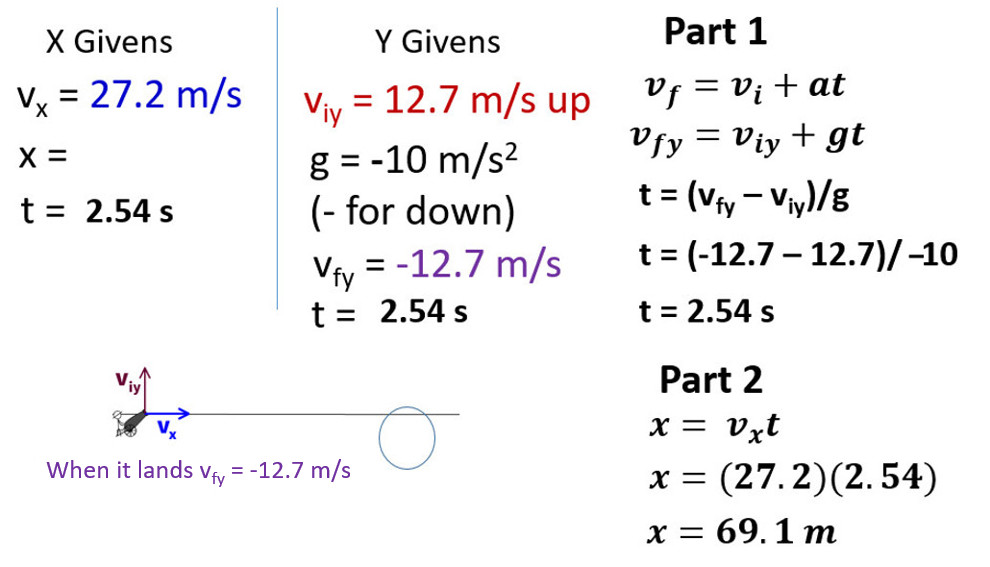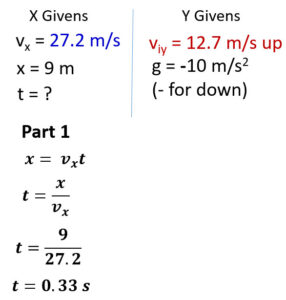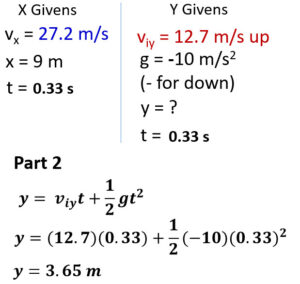Angular Launch Projectile Motion Problems
Break the angular launch into vertical and horizontal velocity components and learn to solve these projectile motion problems.
Learning Targets
- I can break an angular launch into vertical and horizontal velocity components
- I can use my knowledge of projectiles to pick givens and solve problems
Watch the lesson or read through and practice with the content below.
When an object is launched at an angle, it will have a velocity that can be broken into an X-axis component (vx) and an initial Y-axis component (viy).
- The X-axis velocity component (vx) is constant and will not accelerated so it will stay the same the entire flight
- The initial Y-axis velocity component will change as it accelerated by gravity 10 m/s² down. This is why we say (viy) and not just vy because it will change throughout the problem.
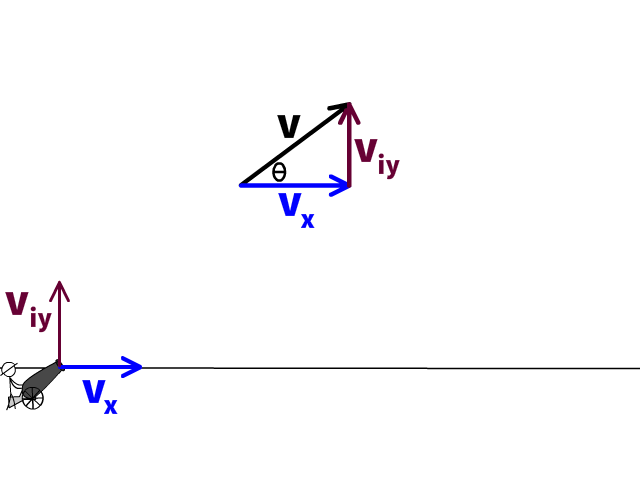
Horizontal Velocity
Horizontal velocity (vx) will remain the same during a projectile's flight. We are assuming ideal conditions with no air resistance on all our examples on this page.
Vertical Velocity Assumptions
Depending on what the problem asks, we may be able to make assumptions about final velocity (vfy)
Highest Point
- If the problem asks us to find the highest point, the final velocity (vfy) is 0 m/s.
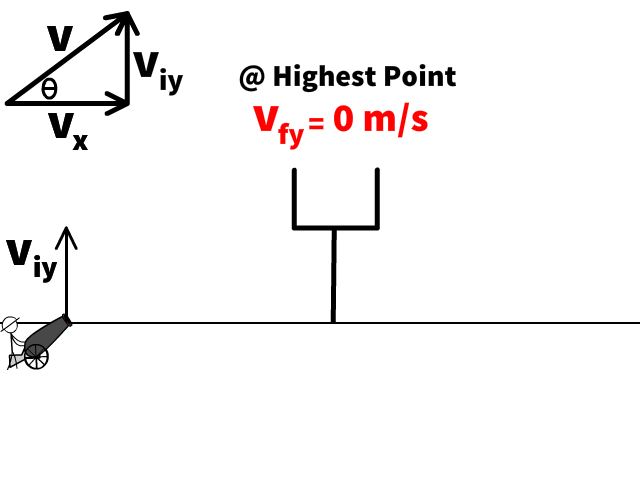
Furthest Point Landing at the Same Level
- If the problem asks us to find the furthest point while landing at the same level, the final velocity (vfy) is equal to the magnitude of the initial Y velocity component (viy) but in the reverse direction. (vfy = -viy)
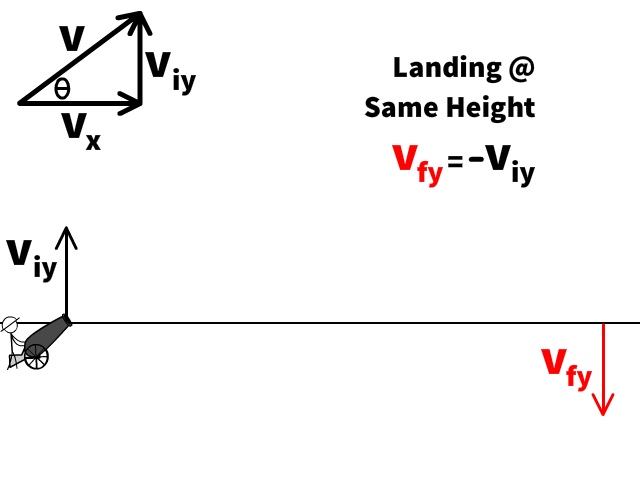
You must read into the problem to determine if you can make the vfy assumptions. You can't make assumptions if the problem asks after so many seconds or after so much distance. One of our later problems will be an example.
Equations of Projectile Motion
Look below to see the 1D motion equations. They can be specialized to projectile motion.
X-Axis Specialization
- The X-axis velocity is constant with (v) replaced by (vx)
Y-Axis Specialization
- (a) is substituted with a constant (g)
- In physics a constant, just means the number will be the same anywhere in a location. On Earth, g = 10 m/s² down
- For displacement, (y) replaces (x)vrepresenting the Y-axis
- Initial velocity (vi) is replaced with (viy) to represent initial velocity in the Y-axis
- Final velocity (vf) is replaced with (vfy) to represent final velocity in the Y-axis
- These are the still same equations as the 1D motion equations.
Calculator Check: Make sure the mode of your calculator is in degrees for the examples

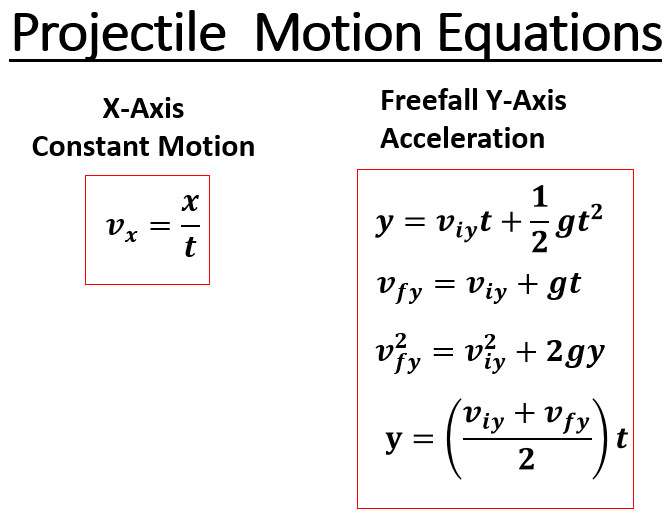
Breaking velocity at an angle into vx and vfy
(Q1-Q4) A cannon ball is shot at 60 m/s at an angle of 20° above the horizontal
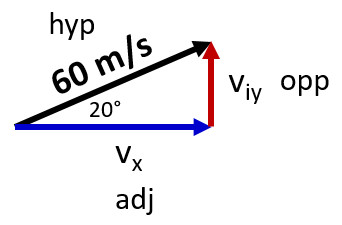
Q1: What is its initial X component of velocity (vx)?
Q2: What is its initial Y component of velocity (viy)?
A cannon ball is shot at 60 m/s at an angle of 20° above the horizontal
Continuing with the givens solved for in Q1 and Q2 we now know the following information we can start populating a separate X and Y givens list as seen here to answer the following questions.
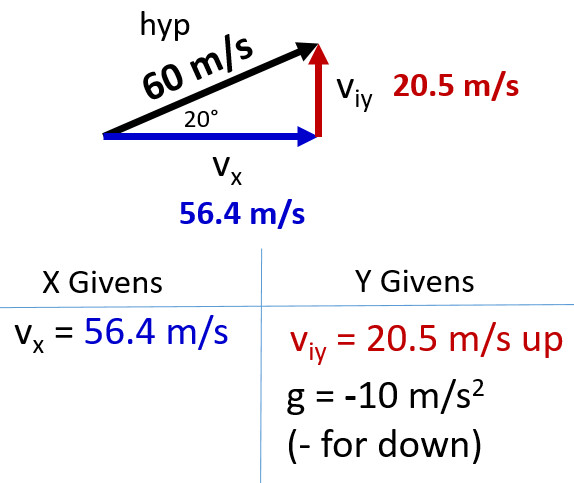
Examples Where You Can Infer vfy
A cannon ball is shot at 60 m/s at an angle of 20° above the horizontal
Q3: What is the highest the cannonball gets?
Q4: How far downrange does the cannonball land at the same height?
(Q5-Q9) A soccer ball is kicked at 30 m/s at an angle of 25° above the horizontal.
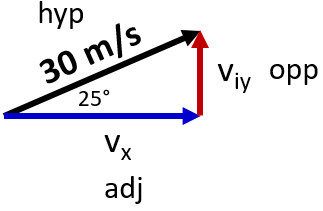
Q5: What is its initial X component of velocity (vx)?
Q6: What is its initial Y component of velocity (viy)?
A soccer ball is kicked at 30 m/s at an angle of 25° above the horizontal.
Continuing with the givens solved for in Q5 and Q6 we now know the following information we can start populating a separate X and Y givens list as seen here to answer the following questions.
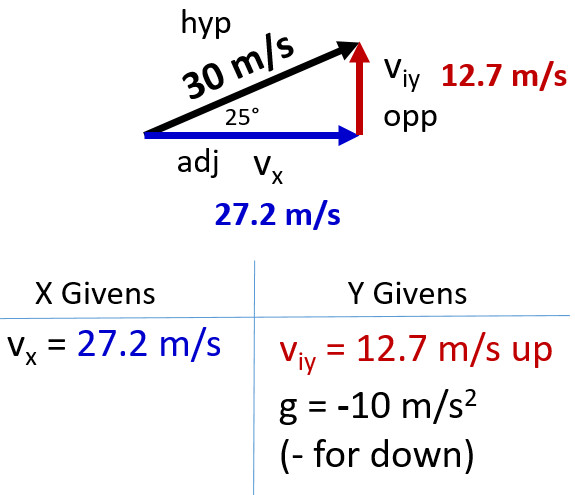
Q7: What is the maximum height the soccer ball reaches?
Q8: How far out does the soccer ball land?
Example Where You Can't Infer vfy
Q9: A soccer ball is kicked at 30 m/s at an angle of 25° above the horizontal. If a soccer goal crossbar is 2.44 meters above the ground. How much over or under the crossbar is the ball 9 meters downrange?
This is a continuation and we already solved for the starting givens here. We can't assume 9 meters downrange is at the top of flight or landing spot. Click see answer when you are ready to see the steps to the solution.



Links
- On to Angular Projectile Motion Practice
- Back to the Main 2D Motion Page
- Back to the Stickman Physics Home Page
- Equation Sheet

